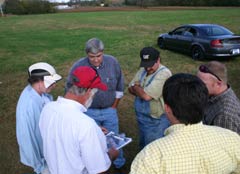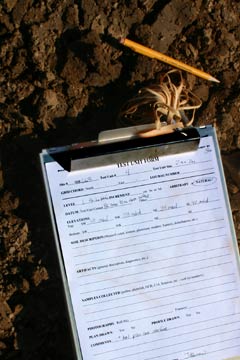- Home page
- What were you doing out there on Highway 61?
- Why did you dig there?
- Where is the site?
- Who lived there?
- What happens after the digging?
- What is archaeology?
- What is it like to work on a field crew?
- What is it like to work in the lab?
- Are there laws that protect archaeological sites?
- Ask a Native American about tribal history, archaeology, and more
- Who can I contact for more information?
- Special pages for students
- Special pages for teachers
- Special pages for archaeologists
Answering your questions
‘Why did you dig there?’
State Highways 61 and 113 were scheduled to be widened and the construction threatened six important archaeological sites. After much planning and consideration, the Georgia Department of Transportation, in consultation with American Indian Tribes and the State Historic Preservation Office, agreed to scientifically excavate and study the portions of the site that would be otherwise lost to construction impacts. The people who built the mounds at the Leake Site and lived in the nearby villages left no written records of who they were or how they lived. The scientific study of the physical remains they left behind is the primary way by which we learn about them. We study the thousands of artifacts, bone fragments, and charred plant remains we recover and examine the thousands of feature stains we find to tell us about the social organization, economy, ceremonies, architecture, art, warfare, trade, diet and the everyday lives of the people who lived here two thousand years ago.
The specific locations we excavated were determined by previous archaeologists who placed small test excavations across the entire area where construction was to occur. This testing phase of work identified six places that contained good evidence of Native American occupation. The archaeologists found places where Indian houses previously stood by locating the faint organic stains in the soil where posts were erected and then later decayed. In many other areas, undisturbed archaeological deposits were found sealed deep in the ground below where a plow or tractor could reach. We sampled nearly all of these areas within the new highway right-of-way.


